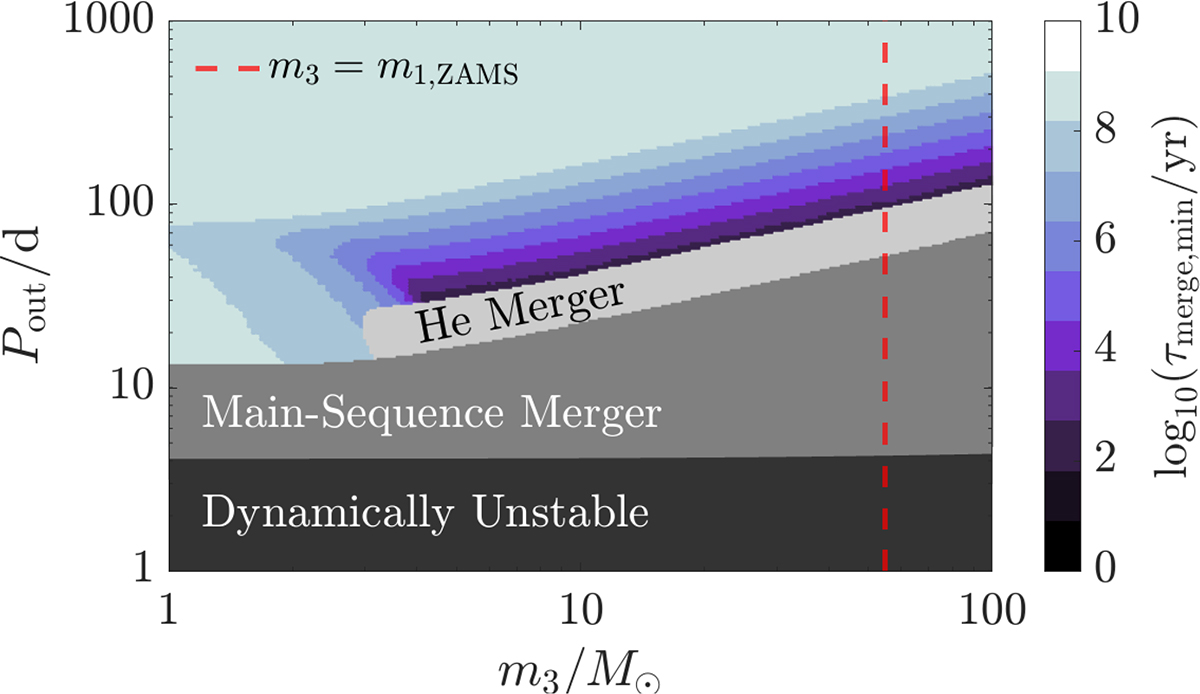Fig. 7.

Download original image
Different outcomes in the parameter space of tight triples, with arbitrary tertiary mass (m3) and outer orbital period (Pout), that host inner binaries whose component stars undergo CHE. At the ZAMS, the system includes an inner circular binary with masses m1=m2 = 55 M⊙ and an orbital period of 1.1 d, at a metallicity of Z = 0.00042. We use different colours to highlight various regions of interest. Dark grey indicates dynamically unstable triples. Grey and light grey represents the region where von Zeipel-Kozai-Lidov (ZLK) oscillations can lead to prompt hydrogen-rich and helium-rich stellar mergers in the inner binary, respectively. The colour bar gradient illustrates how ZLK oscillations can decrease the time-to-coalescence via gravitational-wave emission (τmerge,min), potentially reducing it to the ZLK timescale (cf. Fig. 4). Wide triples (Pout≳1000 d) remain unperturbed, with the inner binary evolving into a BBH that can merge in approximately 450 Myr (Sect. 2.1.1). The vertical dashed red line marks the mass where m3=m1,ZAMS, roughly delineating systems where the tertiary may evolve more rapidly than either of the inner binary components, potentially leading to a tertiary mass-transfer episode.
Current usage metrics show cumulative count of Article Views (full-text article views including HTML views, PDF and ePub downloads, according to the available data) and Abstracts Views on Vision4Press platform.
Data correspond to usage on the plateform after 2015. The current usage metrics is available 48-96 hours after online publication and is updated daily on week days.
Initial download of the metrics may take a while.


